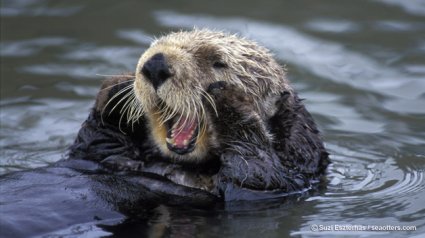 Hooty Help
Hooty Help
Introducing A08: Will He Survive?
Posted
|
Views: 839
INTRODUCING A08: WILL HE SURVIVE?
***
A08, a young, male otter has no easy job—he has been reintroduced to a population of otters in an attempt to restore a flagship species, the Eurasian otter, that previously went extinct in 1998. He has been living in his new home in the Netherlands for over a year now and we’re here to catch up with his and see how his new home is treating him.
C: So, I heard that your transition into the new population was pretty rough, is that true?
AO8: Yeah, to be honest, at first, it wasn’t easy. I think people assume you can just plop one otter into a new population of otters and it will be all butterflies and rainbows. That was definitely not my experience--I was chased away by all the dominant males and they would hide food from me and none of the females would interact with me. Honestly, I thought I was gonna die and I had no chance of reproducing.
C: So what changed?
A08: Well, A18 died, and he was the alpha male around here so that winter, after his death, I reproduced with over 7 females. That was pretty cool to be honest. But the conservationists were worried because I was the male who was getting the most action, you know?
C: Why we're they worried about you reproducing?
What is a flagship species?
Popular, charismatic species that serve as symbols and rallying points to stimulate conservation awareness and activism
***
A08: So they were worried because they thought my offspring would mate with each other (the conservationists call this inbreeding--when two individuals mate who are closely related). Basically, if my kids mate with each other, well, it would be all bad. The conservationists don't really know what could happen exactly, because they told me: "Whether inbreeding will have an effect on the current population is yet unknown, since no data are available on the occurrence of inbreeding depression in otters" (Koelewijn et all., 2010) But basically, I think they're worried that if my offspring mated with each other they would be more likely to produce infertile offspring which would make it harder for them to survive and pass on their genes. They explained it to me in order to deter me from mating with so many of the females. Basically, they explained that my offspring are more likely to share similar alleles (versions of genes) with one another than they are with unrelated individuals.
C: Can you say more about this?
A08: So, if one of my daughters and one of my sons both have the same recessive allele then they'll pass those two recessive alleles onto their children, which would be called a homozygous gene and if the alleles are deleterious or harmful, then they can cause disorders. Basically, there isn't as much genetic diversity if the individuals are closely related (Lorimer). Having a bunch of sick or infertile otters would sort of defeat the whole purpose of this whole reintroduction thing, you know? Also, they were worried cause if I’m dominating the reproductive process then it doesn’t really increase the population size, you know?
C: So it sounds like things are pretty rough right now?
A08: Yeah, it has been kinda rough but it’s nice having a lot of friends, you know? But a lot of my friends are being killed in traffic incidents. We’re just tryna explore, you know? But a lot of dudes have been dying from traffic accidents, most of the females are okay though. But it’s the highest cause of mortality right now (Koelewijn et all., 2010).
C: I heard rumors they’re trying to find another population for you all to mate with?
A08: Yeah, I heard that too. They said ideally they would find another population for us to breed with to counteract the possible negative effects of inbreeding… but I also heard if they can’t do that then they’re gonna reintroduce an unrelated male (like they did with me last year) so, we might have some new competition around here…
C: Well, I wish you the best of luck and hope you stay safe!
A08: Hey, thanks man! Catch up with ya later!
***

Portrait of A08
Sources:
Morell, Virginia. “Into the Wild: Reintroduced Animals Face Daunting Odds”. Science 320.5877
(2008): 742–743. Web.15 March 2016.
Koelewijn, H. P., M. Pérez-Haro, H. A. H. Jansman, M.C. Boerwinkel, J. Bovenschen, D.R. Lammertsma, F.J.J. Niewold, and A.T. Kuiters. "The Reintroduction of the Eurasian Otter (Lutra Lutra) into the Netherlands: Hidden Life Revealed by Noninvasive Genetic Monitoring." Conservation Genetics Apr. 2010: 601-14. Springer.com. Springer Netherlands. Web. 01 May 2015.
Lorimer, Heather E. "Inbreeding and Genetics." Inbreeding and Genetics. N.p., n.d. Web. 02 May 2016.
 Magazine Posts
Magazine Posts Table of Contents
Table of Contents